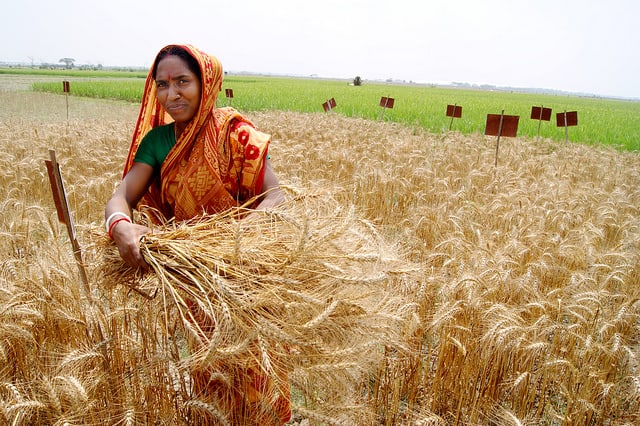New CoP Publication: Role of Modelling in International Crop Research
CGIAR researchers outline the history and basic principles of crop modelling, and describe major theoretical advances and their practical applications by international crop research centers.
“Crop modelling has the potential to significantly contribute to global food and nutrition security,” claim the authors of a recently published paper lead for the Community of Practice on Crop Modeling on the role of modelling in international crop research. “Millions of farmers, and the societies that depend on their production, are relying on us to step up to the plate.”
Among other uses, crop modelling allows for foresight analysis of agricultural systems under global change scenarios and the prediction of potential consequences of food system shocks. New technologies and conceptual breakthroughs have also allowed modelling to contribute to a better understanding of crop performance and yield gaps, improved predictions of pest outbreaks, more efficient irrigation systems and the optimization of planting dates.
While renewed interest in the topic has led in recent years to the development of collaborative initiatives such as the Agricultural Model Intercomparison and Improvement Project (AgMIP) and the CGIAR Platform for Big Data in Agriculture, further investment is needed in order to improve the collection of open access, easy-to-use data available for crop modelling purposes. Strong impact on a global scale will require a wide range of stakeholders – from academia to the private sector – to contribute to the development of large, multi-location datasets.
In “Role of Modelling in International Crop Research: Overview and Some Case Studies,” CGIAR researchers outline the history and basic principles of crop modelling, and describe major theoretical advances and their practical applications by international crop research centers. They also highlight the importance of agri-food systems, which they view as key to meeting global development challenges. “The renewed focus on the systems-level has created significant opportunities for modelers to participant in enhancing the impact of science on developments. However, a coherent approach based on principles of transparency, cooperation and innovation is essential to achieving this.”
The authors call for closer interdisciplinary collaboration to better serve the crop research and development communities through the provision of model-based recommendations which could range from government-level policy development to direct crop management support for resource-poor farmers.
Read the full article in Agronomy 2018, Volume 8 (12).
February 28, 2019
Emma Orchardson
CIMMYT
Latest news





